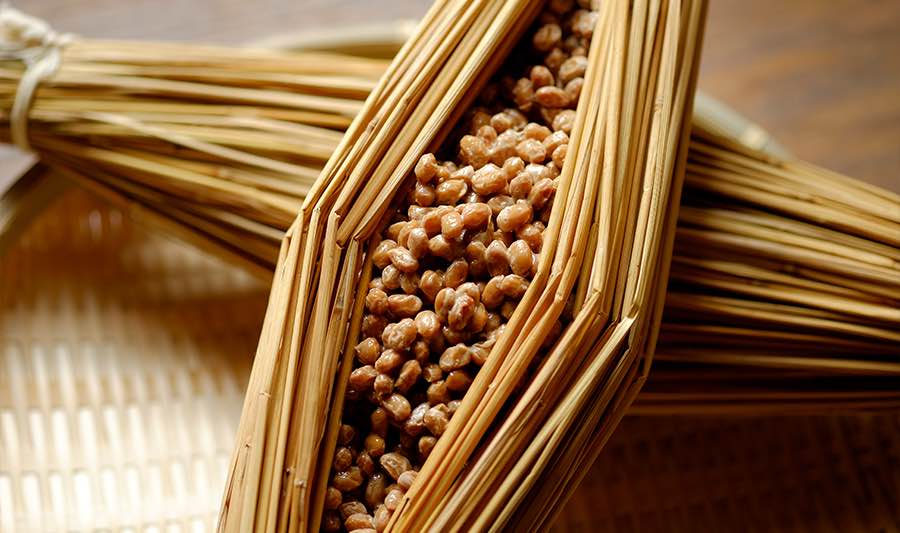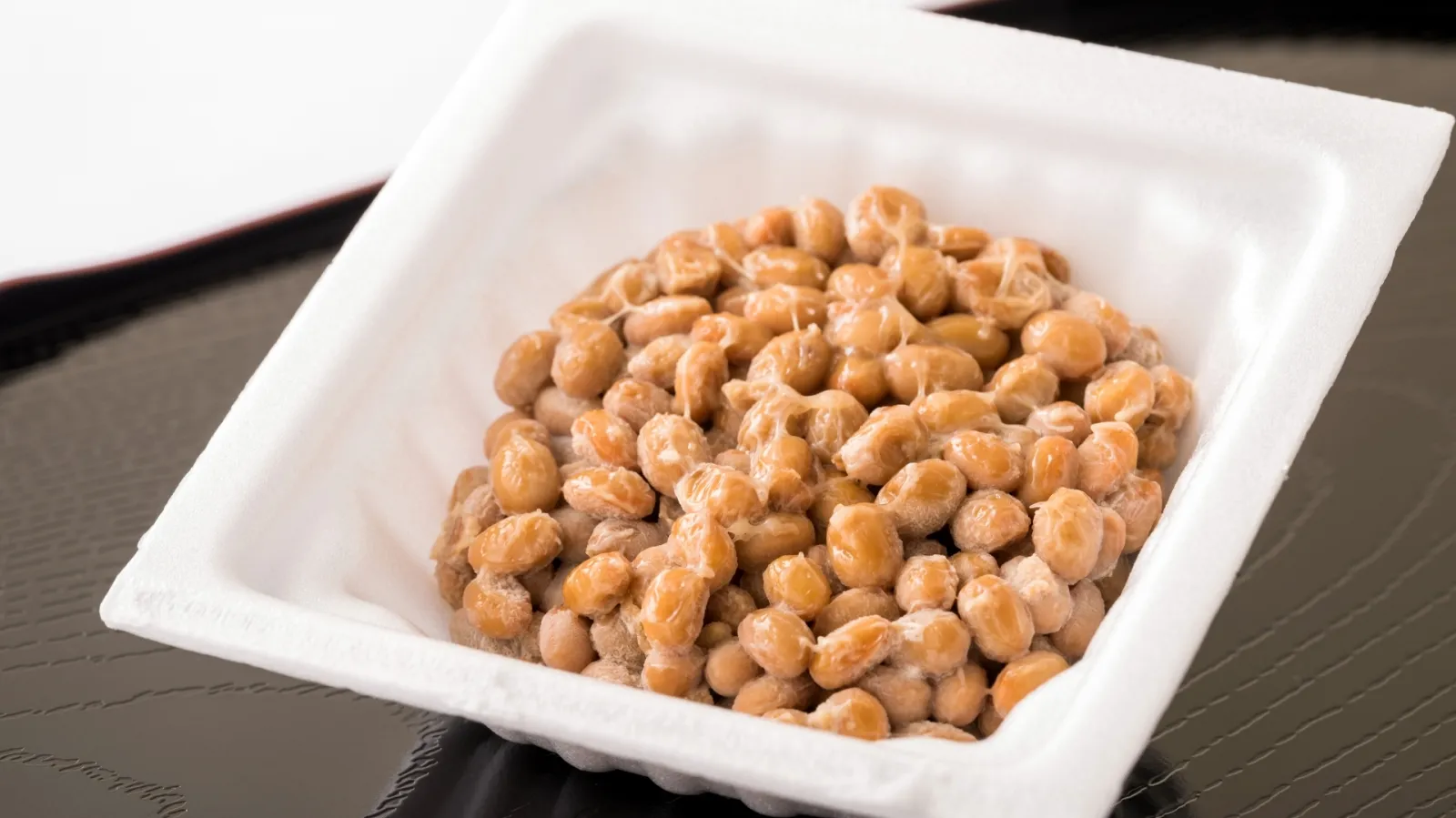In Japan, where longevity and low obesity rates are a celebrated norm, the dietary habits are often spotlighted.
Alongside staples like fish and a rainbow of vegetables, there’s a humble yet powerful food that plays a significant role in Japanese health: Natto.
This fermented soybean dish, with its distinctive aroma and sticky texture, is consumed in copious amounts throughout Japan, quietly contributing to the nation’s well-being.
Table of Contents
But Natto is more than just a traditional food; it’s a powerhouse of nutrients and health benefits, deeply woven into the fabric of Japanese daily meals.
How does this unassuming dish contribute to a healthier life? Let’s delve into the specifics.
Natto is known to contribute to improved gut health, boosted immunity, prevention of blood clots, and stronger bones – just to name a few.
To truly appreciate Natto, we need to understand its story and composition. Let’s embark on a flavorful journey to discover the wonders of Natto.
- Considerations about Japanese eating habits: Discovering the secrets of beauty and health through the Japanese diet
The Accidental Discovery: A Tale of Fermented Fortune
The exact origins of Natto remain shrouded in history, but a popular legend attributes its discovery to the late Heian period (794-1185).
It is said that during a military campaign in northeastern Japan, the army of Minamoto no Yoshiie boiled soybeans for their horses.
Some of these beans were inadvertently wrapped in straw, and upon opening later, they were found to be fermented and sticky – the first Natto was born! Straw is naturally rich in Bacillus subtilis natto bacteria, which is the key microorganism responsible for Natto’s unique fermentation process.

Japan’s Love Affair with Natto: Consumption in Numbers
While specific annual consumption figures can fluctuate, Natto holds a firm place in Japanese diets.
It’s estimated that Japan consumes hundreds of thousands of tons of Natto annually.
You’ll find it in almost every supermarket and it’s a staple in many households, often enjoyed for breakfast with rice, miso soup, and other side dishes.
Its accessibility and affordability further contribute to its widespread consumption.
Why Natto is Considered a Health Superstar
Natto’s health halo is well-deserved, stemming from a combination of rich nutrients and the benefits of fermentation.
Here are some key reasons why Natto is lauded as a health-promoting food:
- Nutrient Density
Natto is packed with essential nutrients including high-quality protein, fiber, vitamins (especially Vitamin K2), and minerals like iron and calcium. - Fermentation Power
As a fermented food, Natto is a probiotic powerhouse, promoting a healthy gut microbiome. The fermentation process also creates beneficial bioactive compounds. - Nattokinase Enzyme
This unique enzyme found in Natto is known for its potential to improve blood flow and prevent blood clots, contributing to cardiovascular health.
The Dynamic Duo: Isoflavones and Bacillus subtilis natto
Let’s delve deeper into two particularly potent components of Natto: soy isoflavones and Bacillus subtilis natto bacteria.
Soy Isoflavones
These plant compounds found in soybeans are known for their estrogen-like effects, which can offer a range of health benefits:
- Bone Health
Isoflavones may help maintain bone density, reducing the risk of osteoporosis. - Menopausal Symptom Relief
They may alleviate symptoms associated with menopause, such as hot flashes. - Heart Health
Research suggests isoflavones can contribute to improved cholesterol levels and overall cardiovascular health.
Bacillus subtilis natto Bacteria
This powerhouse bacterium is not just responsible for fermentation; it’s a probiotic superstar and a nutrient factory in its own right:
- Probiotic Benefits
Bacillus subtilis natto is a robust probiotic that survives the journey through the digestive system, contributing to a balanced and healthy gut microbiome. - Vitamin K2 Production
Natto is one of the richest food sources of Vitamin K2 (menaquinone-7), crucial for bone health, blood clotting, and preventing arterial calcification. - Nattokinase Production
As mentioned earlier, this enzyme is a potent agent for promoting healthy blood flow and preventing blood clots.
Backed by Science: Research Highlights
- The relationship between Japanese food and lifestyle-related diseases: Japan Slim Secrets: Top 10 Weight Loss Foods
The health benefits of Natto are not just anecdotal; they are increasingly supported by scientific research.
While specific paper titles can be easily found on databases like PubMed using keywords such as “natto,” “nattokinase,” “isoflavones,” and “bone density,” research consistently points towards the positive impacts of Natto consumption. Studies have explored Natto’s effects on:
- Bone Density
Research suggests Natto, rich in Vitamin K2 and isoflavones, can positively impact bone mineral density, crucial for preventing osteoporosis. - Cardiovascular Health
Nattokinase has been studied for its fibrinolytic activity, which may help dissolve blood clots and improve blood fluidity. - Gut Microbiome
Natto consumption can contribute to a more diverse and balanced gut microbiome, essential for overall health and immunity.
Beyond the Stars: Other Nutritional Gems in Natto
Beyond isoflavones, Vitamin K2, and nattokinase, Natto boasts a wide array of other beneficial nutrients, including:
- Fiber
Promotes digestive health, regulates blood sugar, and aids in weight management. - Protein
A complete protein source, providing essential amino acids for muscle building and repair. - Iron
Essential for preventing anemia and supporting energy levels. - Calcium
Crucial for strong bones and teeth, and nerve and muscle function. - Polyamines
Emerging research suggests these compounds may have anti-aging and cell-protective properties. - Folate (Vitamin B9)
Important for cell growth and development, particularly vital during pregnancy.
Research on natto can be found here: Tsukuba journal
A Call to Embrace Natto: A Global Superfood.
For those unfamiliar with Natto, its unique aroma and texture might be initially…surprising.
However, beneath the surface lies a nutritional powerhouse with a rich history and compelling health benefits.
Just as sushi and miso soup have found global appreciation, perhaps it’s time for the world to embrace Natto.
If you’re seeking to diversify your diet with a food that’s not only culturally rich but also incredibly good for you, consider giving Natto a try.
Whether you enjoy it in traditional Japanese style with rice and soy sauce, or venture to incorporate it into modern dishes, your body (and your gut microbiome!) might just thank you.
Embrace the stickiness, explore the flavor, and unlock the potential health benefits of Natto – Japan’s unsung superfood.
For other superfoods click here: 5 Japanese Superfoods Regularly Consumed by Japanese People
References










Leave a Reply